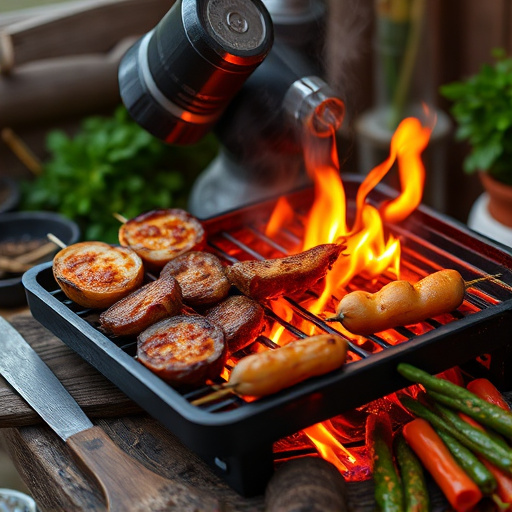Crafting a perfect homemade BBQ recipe starts with high-quality, meaty ribs (baby back or spare rib cuts) from reputable sources. Key steps include brining ribs in a flavor-rich solution to enhance tenderness and retain moisture during smoking. A simple brine mix of coarse salt, brown sugar, peppercorns, and spices like paprika, garlic powder, and onion powder ensures juicy, flavorful ribs for your homemade BBQ sauce.
“Indulge in the mouthwatering allure of perfectly smoked ribs—a quintessential homemade BBQ recipe. This comprehensive guide takes you on a culinary journey from choosing the right cut, ensuring quality with fresh, meaty ribs, to brining for ultimate flavor infusion. Discover the art of smoking at ideal temperatures and learn about various smoker types.
Master the magic of marinades, blending mouthwatering BBQ sauce bases with spices and acidity. Navigate the steps from brine to grill, including pre-cooking options for quicker results. Finally, explore creative serving suggestions to present your homemade BBQ masterpiece with side dishes, sauces, and garnishes.”
- Choosing the Right Ribs: Quality and Cut
- – Types of ribs: St. Louis, baby back, spareribs
- – Importance of fresh, meaty ribs
- Preparing the Ribs: Brining for Flavor Infusion
- – Benefits of brining: Moisture retention, enhanced flavor
- – Brine recipe and method: Salt, sugar, spices, and liquid ratios
Choosing the Right Ribs: Quality and Cut

When it comes to crafting the perfect homemade BBQ recipe, starting with the right ribs is paramount. Opt for high-quality, meaty ribs that are at least 1/2 inch thick. This ensures a tender, juicy result after slow cooking and smoking. Look for ribs cut between the bone and meat (known as “baby back” or “spare rib”), which tend to be more flavorful and easier to manage than larger cuts. Quality is key; choose fresh, well-marbled ribs from a reputable source to guarantee a superior dining experience.
– Types of ribs: St. Louis, baby back, spareribs
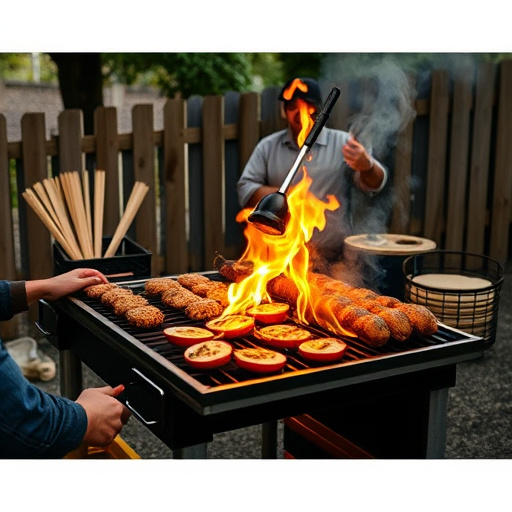
When it comes to ribs, there are three main types that home chefs often encounter: St. Louis-style, baby back, and spareribs. Each variety offers a unique experience for BBQ enthusiasts. St. Louis ribs, also known as St. Louis-cut or spare rib tips, are derived from the top portion of the rack and are characterized by their large meaty chunks and minimal bone structure, making them ideal for slow cooking until tender and flavorful.
Baby back ribs, on the other hand, come from the loin section and are attached to a small bone at one end, offering a more substantial bone-in experience. They require careful cooking to ensure the meat doesn’t dry out but can result in incredibly juicy, mouthwatering ribs when prepared correctly. Spareribs are the full rack of ribs with both the meaty chunks and the bone structure intact, providing a hearty serving that’s perfect for feeding a crowd in a homemade BBQ recipe.
– Importance of fresh, meaty ribs
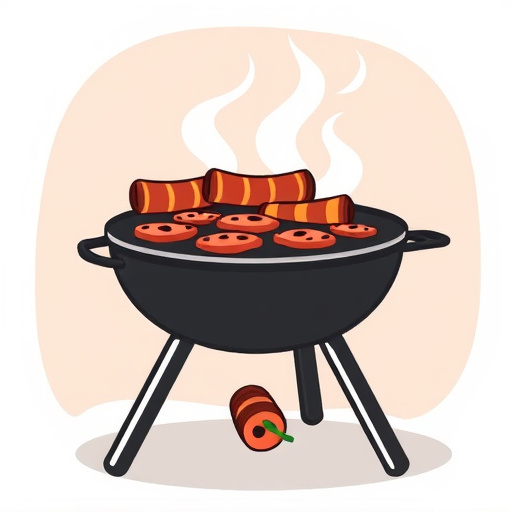
When crafting the perfect homemade BBQ recipe, the foundation lies in using fresh, meaty ribs. Quality is paramount; choose ribs that are well-marbled with fat, indicating flavor and tenderness. Look for a good balance between meat and bone, ensuring each bite is packed with rich, savory goodness. Fresh ribs will result in a tender, succulent end product, allowing the flavors of your marinade to penetrate deeply. This attention to detail is what sets apart exceptional BBQ from merely adequate; it’s the difference between a memorable meal and an ordinary one.
Preparing the Ribs: Brining for Flavor Infusion
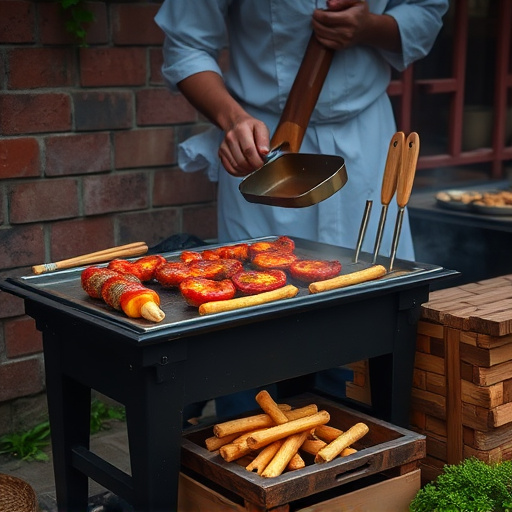
Preparing your ribs for a mouthwatering homemade BBQ recipe starts with brining. Brine acts as a flavor enhancer, tenderizer, and preservative, elevating your rib game to the next level. Begin by rinsing the ribs under cold water to remove any excess dirt or grime. Next, prepare a simple brine solution by mixing equal parts warm water and coarse salt in a large container. For added depth of flavor, include spices like black peppercorns, garlic powder, paprika, and bay leaves in the brine. Submerge your ribs completely in the brine, ensuring every surface is coated. Let them soak for 2-4 hours in the refrigerator to allow the flavors to penetrate the meat. This simple step will result in tender, succulent ribs that shine when grilled or smoked.
– Benefits of brining: Moisture retention, enhanced flavor
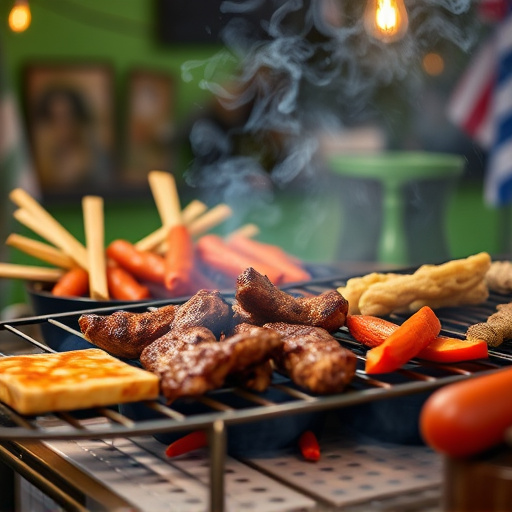
Brining is a time-honored technique that offers numerous advantages for homemade BBQ recipes, especially when it comes to tender smoked ribs. One of the primary benefits is moisture retention. By submerging your ribs in a briny solution before smoking, you’re essentially locking in juices, ensuring they remain succulent and tender throughout the cooking process. This step is crucial in preventing dryness, which can often be a pitfall when preparing ribs.
Moreover, brining significantly enhances flavor. The salt in the brine penetrates the meat, breaking down its fibers and allowing the marinade’s spices and herbs to infuse deeper into the rib meat. This results in an explosion of flavors that will delight your taste buds. Whether you opt for a simple combination of salt, pepper, and garlic or venture into more complex blends, brining takes your homemade BBQ recipe to the next level, making it a must-try technique for any serious grill master.
– Brine recipe and method: Salt, sugar, spices, and liquid ratios

For a delicious homemade BBQ recipe, creating a brine solution is a great way to start. Brining adds moisture and flavor to your ribs, ensuring they’re tender and juicy. Start by mixing 1 cup of coarse salt, ½ cup of brown sugar, and 2 tablespoons of peppercorns in a large container. Adjust the spices according to your preference—a classic combination includes paprika, garlic powder, and onion powder. Next, add enough warm water to cover the ribs fully, stirring until both the salt and sugar dissolve. Let the brine cool before using it to submerge your ribs for 2-4 hours in the refrigerator. This process is key to developing that mouthwatering, briny flavor that pairs perfectly with a smoky, homemade BBQ sauce.
